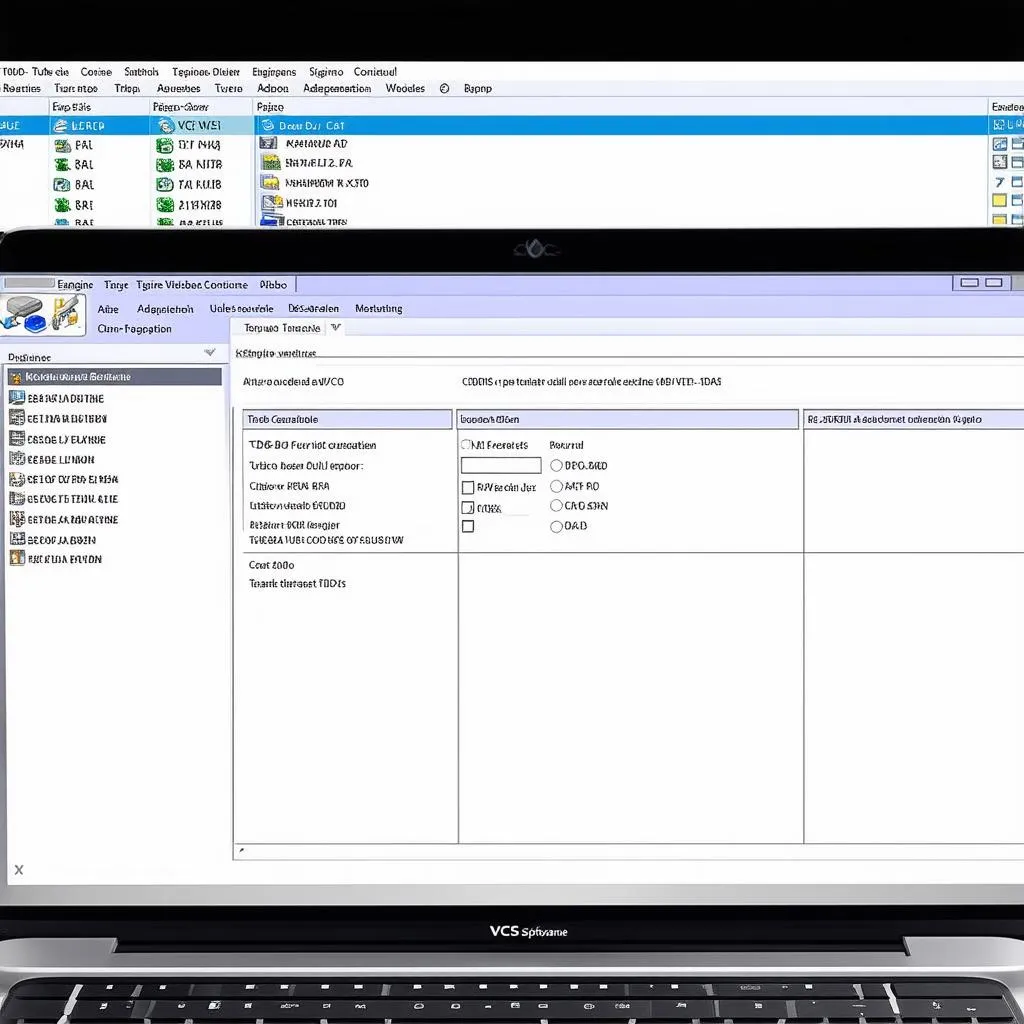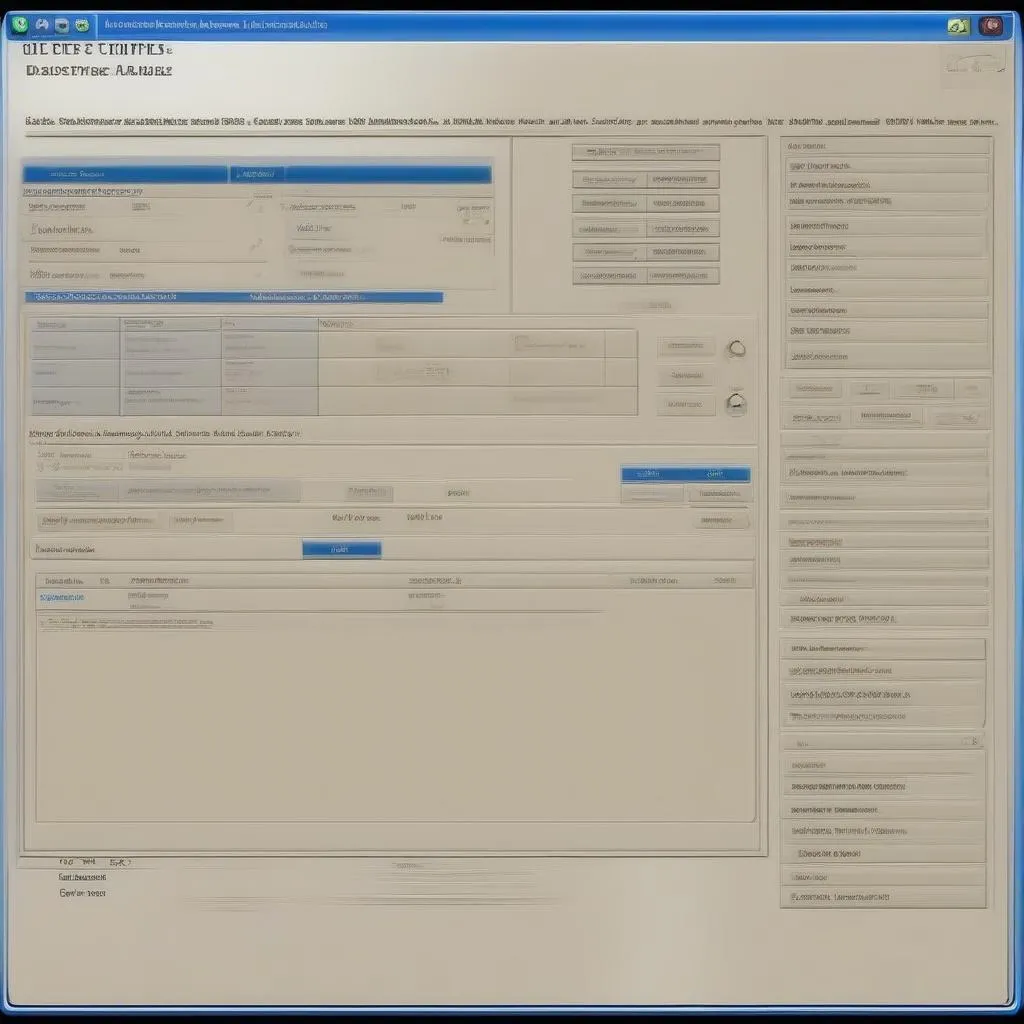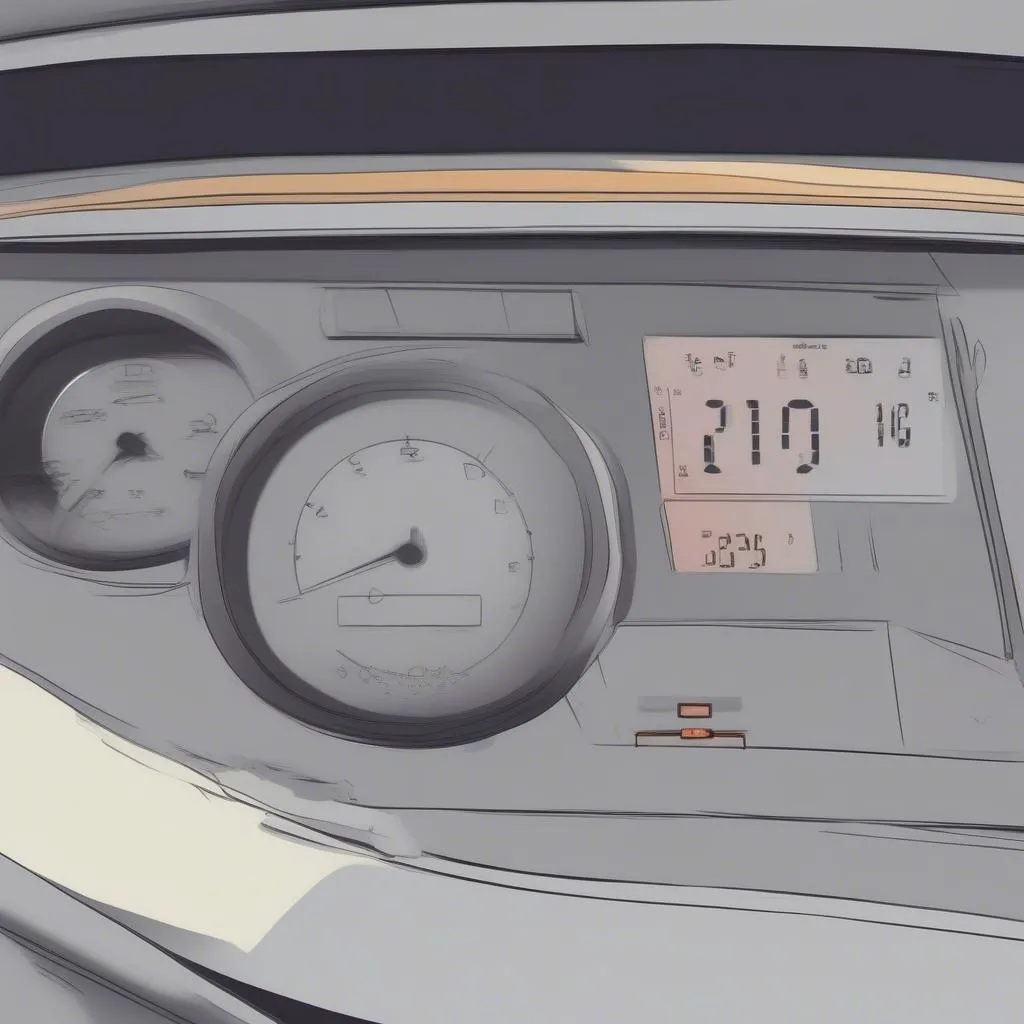Turbocharged engines are fantastic for boosting power output, but fine-tuning them requires a delicate touch. That’s where VCDS (Vag-Com System) and turbo adaptation come in. This procedure allows you to calibrate your turbocharger for optimal performance using a powerful diagnostics tool, often preferred by experienced mechanics and passionate DIY enthusiasts. Let’s dive into the world of VCDS turbo adaptation, exploring its intricacies and how it can help you achieve the desired performance from your vehicle.
What is VCDS Turbo Adaptation?
In essence, VCDS turbo adaptation is a procedure that involves resetting the learned values of your turbocharger control system using the VCDS software. Your car’s Engine Control Unit (ECU) stores these learned values over time. They represent the ECU’s understanding of your turbocharger’s behavior under different operating conditions.
Think of it as recalibrating the ECU’s expectations of boost pressure levels. By performing a turbo adaptation, you essentially “introduce” the ECU to the turbocharger’s performance parameters, allowing it to regulate boost pressure more accurately. This results in smoother power delivery, potentially enhanced fuel economy, and the prevention of overboosting situations.
When Should You Perform a VCDS Turbo Adaptation?
Performing a VCDS turbo adaptation isn’t a routine maintenance task. It’s typically done after certain repairs or modifications have been carried out on your turbocharged engine. Here are some common scenarios that might warrant a turbo adaptation:
- After replacing the turbocharger: When you install a new turbocharger, its operating characteristics might differ slightly from the old one. A turbo adaptation helps the ECU learn these new characteristics.
- After cleaning or replacing the N75 valve: The N75 valve plays a crucial role in controlling boost pressure. If it’s faulty or has been cleaned, adaptation helps recalibrate the system.
- After cleaning or replacing the MAF sensor: The Mass Airflow (MAF) sensor measures the amount of air entering the engine. If its readings are off, it can affect boost pressure control. Adaptation helps re-establish accurate readings.
- Experiencing erratic boost pressure or limp mode: If you’re experiencing issues like overboosting, underboosting, or the dreaded limp mode, a VCDS turbo adaptation might help resolve the problem by resetting learned values and allowing the ECU to re-learn correct boost control.
How to Perform a VCDS Turbo Adaptation
Before you begin, it’s essential to have a genuine Ross-Tech VCDS cable and software. Using counterfeit tools can lead to inaccurate readings and potential damage to your vehicle’s electronics.
Here’s a general outline of the VCDS turbo adaptation process:
- Connect your VCDS cable to your car’s OBD-II port and your laptop.
- Turn on the ignition but do not start the engine.
- Launch the VCDS software and select the “Select Control Module” option.
- Choose “Engine” from the list of control modules.
- Select “Basic Settings” and then locate the adaptation channel related to turbocharger adaptation. The specific channel number may vary depending on your car’s make and model. Consult your car’s service manual or a reliable online forum for the correct channel.
- Follow the on-screen prompts provided by the VCDS software to perform the adaptation. This usually involves running the engine at a specific RPM for a certain duration while monitoring specified values.
- Once the adaptation process is complete, clear any fault codes stored in the ECU.
- Turn off the ignition, wait a few seconds, and then start the engine to check if the adaptation was successful. You should notice smoother boost delivery and improved performance.
 VCDS Software Screenshot
VCDS Software Screenshot
Important Notes:
- Always consult your car’s service manual or seek guidance from a qualified mechanic before attempting a VCDS turbo adaptation. Incorrect procedures can potentially harm your engine.
- Ensure your car’s battery is fully charged before starting the adaptation process. Interruptions due to low battery voltage can disrupt the adaptation and lead to errors.
Benefits of VCDS Turbo Adaptation
When performed correctly, VCDS turbo adaptation can offer several benefits:
- Improved Throttle Response: By optimizing boost pressure control, the engine responds more quickly to throttle inputs, enhancing the overall driving experience.
- Smoother Power Delivery: Adaptation helps eliminate jerky acceleration and promotes linear power delivery, making for a more enjoyable ride.
- Potential Fuel Efficiency Gains: Fine-tuning the turbocharger’s operation can lead to marginal improvements in fuel economy, especially if previous issues were causing inefficient boost control.
- Prevention of Overboosting: By setting correct boost limits, turbo adaptation helps prevent the engine from exceeding safe boost pressure levels, protecting vital engine components.
 Mechanic Connecting VCDS Cable
Mechanic Connecting VCDS Cable
Common Questions About VCDS Turbo Adaptation
Can I perform VCDS turbo adaptation on any car?
No, VCDS turbo adaptation is typically performed on vehicles from the Volkswagen Audi Group (VAG) equipped with turbocharged engines. Other car manufacturers may have different diagnostic procedures and software.
Is VCDS turbo adaptation a DIY-friendly procedure?
While the process might seem straightforward, it’s crucial to understand the technical aspects and potential risks involved. If you’re not comfortable working with car electronics and diagnostics, it’s best to seek professional help.
How often should I perform a VCDS turbo adaptation?
Turbo adaptation is not a routine maintenance procedure. It’s typically only necessary after specific repairs or modifications, as mentioned earlier.
What are the risks of incorrect VCDS turbo adaptation?
Incorrect procedures can lead to various issues, including erratic boost control, engine damage due to overboosting, or even ECU damage. Always follow the correct procedures and seek professional help if unsure.
Need Help with Your Car Diagnostics?
CARDIAGTECH offers a range of diagnostic tools and resources for car enthusiasts and professionals alike. If you’re looking to explore the world of automotive diagnostics or need assistance with VCDS-related procedures, visit CARDIAGTECH for more information and support.
We hope this guide has provided valuable insights into VCDS turbo adaptation. Remember, responsible car maintenance and modification require informed decisions and, often, the guidance of experienced professionals.


